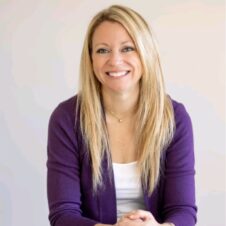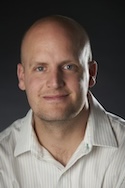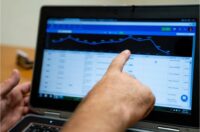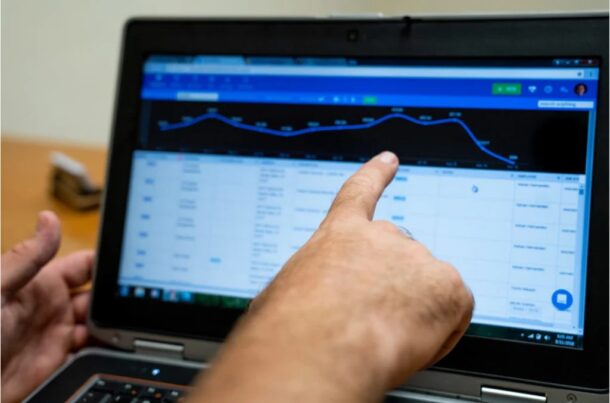By Heather Ripley Most contractors never think about how important having a trained media team is until they are faced with a business or image crisis. The thought of dealing with the press when you are going through one of your company’s worst times can be harrowing for even the most outgoing people. While it Read more
Industry Blogs

By Heather Ripley
Most contractors never think about how important having a trained media team is until they are faced with a business or image crisis.
The thought of dealing with the press when you are going through one of your company’s worst times can be harrowing for even the most outgoing people.
While it is important to have a solid crisis public relations strategy during a disaster, the fact is that it’s important that your company have people trained to talk with the media, even when times are good.
A good PR partner will be able to train your staff on how to talk with the media comfortably during uncomfortable times.
Building Credibility
 For most home service contractors, your reputation is one of the most important selling points you can have. If you’re known in the community as an honest service company that readily provides tips to homeowners, you will be seen in a positive light.
For most home service contractors, your reputation is one of the most important selling points you can have. If you’re known in the community as an honest service company that readily provides tips to homeowners, you will be seen in a positive light.
Just like a squeaky wheel gets the oil, a home service company that regularly provides timely and informative press releases on how to make your heating system more efficient or provides tips to keep a home safe from carbon monoxide leaks will get noticed by your local media. Keeping your name top-of-mind means that the media knows who to call when they need a quote from a home service professional ahead of bad weather or after a crisis.
While a PR team can help you craft the releases that get you noticed, you will want trained spokespeople from your company when it comes time to appear on camera.
Controlling the Narrative
If you’ve ever been interviewed by a reporter, you know that sometimes the questions may seem challenging or off topic.
We’ve all seen interviews that go “off the rails,” and the interviewee says something that can be misconstrued or taken out of context.
Your public relations partners should be able to help you prepare to answer questions in a way that informs but also keeps you on message. You don’t want to write out a script—that can make you sound boring and non-responsive. But you do want to steer conversations so that you’re able to speak confidently about what you know.
Once you have learned some tips, you need to practice them so you are able to stay on message.
Have a trusted coworker or friend ask you questions on camera and then review your interview. If you wander off topic, talk too much, fidget or say, “um,” too often, keep practicing until your interview style is tight.
Making Every Opportunity Count
The most important thing to remember about media opportunities is that they are always a chance to talk about your business to new audiences and potential clients.
With this in mind, here are a few quick tips to make your interview more compelling:
- Answer in full sentences. Nothing is duller than to watch an interview where their only response is “yes” or “no.”
- Talk in sound bites. The media always likes to use a full quote. In order for your comments to always be taken in context, speak as though your words will be a sound bite.
- Say your company name. You don’t want to be too obvious, but if you say sentences like, “At XYZ Plumbing, we…” then complete your thought, you will be able to keep your name top-of-mind.
- Remember that you’re the expert. The media came to you because you know your stuff. Practice, prepare and be confident.
 Heather Ripley is founder and CEO of Ripley PR, an elite, global public relations agency specializing in the franchising, skilled trades and B2B tech industries. Ripley PR has been listed by Entrepreneur Magazine as a Top Franchise PR Agency for seven consecutive years and was recently named as one of Newsweek’s America’s Best Public Relations Agencies for 2024. Heather Ripley was recently named as a 2024 PRNews Top Women honoree in the business entrepreneur category. She is also the author of “NEXT LEVEL NOW: PR Secrets to Drive Explosive Growth for your Home Service Business,” which is now available on all audiobook platforms. For additional information, visit www.ripleypr.com.
Heather Ripley is founder and CEO of Ripley PR, an elite, global public relations agency specializing in the franchising, skilled trades and B2B tech industries. Ripley PR has been listed by Entrepreneur Magazine as a Top Franchise PR Agency for seven consecutive years and was recently named as one of Newsweek’s America’s Best Public Relations Agencies for 2024. Heather Ripley was recently named as a 2024 PRNews Top Women honoree in the business entrepreneur category. She is also the author of “NEXT LEVEL NOW: PR Secrets to Drive Explosive Growth for your Home Service Business,” which is now available on all audiobook platforms. For additional information, visit www.ripleypr.com.

By Heather Ripley What do Croc-Tarts, the presence of lithium at more than 1,400 feet at the Tonopah Flats Lithium Project in Tonopah, Nevada, and Henry Kissinger’s death at the age of 100 have in common? They were all press releases that informed, educated or delighted readers in 2023. And they not only announced real Read more
By Heather Ripley
What do Croc-Tarts, the presence of lithium at more than 1,400 feet at the Tonopah Flats Lithium Project in Tonopah, Nevada, and Henry Kissinger’s death at the age of 100 have in common?
They were all press releases that informed, educated or delighted readers in 2023. And they not only announced real news, they also hooked readers by sparking a conversation about what each of these events meant to the reader right up front.
While your home service company may not have news that will go viral on social media, what you do have to announce is important, nonetheless. That’s why you need to ensure that your press releases are relevant, concise and engaging.
A well-written press release can give your home service business that extra something that sets you apart from your competition in several ways.

Consistently providing informative press releases introduces your company and expertise to local media outlets. Quality Heating, Cooling, Plumbing & Electric Vice President Cassie Pound is regularly called upon by the media in her Tulsa, Oklahoma, service area to provide homeowner tips and to give her opinion on issues related to the skilled trades industry.
Boosting Your Thought Leadership
Is a cold snap on your area’s horizon? Or, is bad air plaguing your city? These may seem like standard events, but as an expert plumber, you can advise homeowners how to save their pipes from the cold, or, as a professional HVAC owner, you can provide tips on improving indoor air quality (IAQ).
Local news outlets probably will be doing stories on these events, so, by getting your name out to them through a series of ongoing press releases, you can let them know you have advice to provide. Be the thought leader in your area that the media turns to when they need a quote about home safety and protection.
Building Your Reputation
By providing thought leadership to homeowners in your area, you can also build your reputation as a helpful service provider.
If your team is raising money or charitable donations for your favorite local charity, letting the public know of your efforts can also help your reputation. Being seen as someone who cares for the community is something more and more people consider when hiring a new service provider.
Expanding Your Audience
Your marketing team has worked hard to build your target audience and knows who your ideal customer is. However, there’s something to be said about refreshing your audience every so often, too.
When you issue a press release, you never know who is going to see that release, remember your name, and call upon you when they need service.
Improving Your SEO
And speaking of your marketing team, they will love one of the other side effects of issuing press releases on a consistent basis: it improves your search engine results.
When Google sorts its searches, it gives a higher ranking to those sites that are mentioned in other places. If your name shows up on your local news’ site or in a trade publication, Google will view it more favorably.
An effective press release strategy helps you establish relationships with the media and your local community. But, in order for it to be effective, you need releases that are consistent, tell a story and engage the public.
But if you’re better at writing business plans than at telling a story, you might need a public relations team to help you better tell your story. A PR partner that understands your business can help you write engaging and topical press releases while simultaneously using its contacts in the media to get your name out.
So, step away from your competition by considering a PR partner that can help you spark conversations.
 Heather Ripley is founder and CEO of Ripley PR, an elite, global public relations agency specializing in the franchising, skilled trades and B2B tech industries. Ripley PR has been listed by Entrepreneur Magazine as a Top Franchise PR Agency for seven consecutive years and was recently named as one of Newsweek’s America’s Best Public Relations Agencies for 2024. Heather Ripley was recently named as a 2024 PRNews Top Women honoree in the business entrepreneur category. She is also the author of “NEXT LEVEL NOW: PR Secrets to Drive Explosive Growth for your Home Service Business,” which is now available on all audiobook platforms. For additional information, visit www.ripleypr.com.
Heather Ripley is founder and CEO of Ripley PR, an elite, global public relations agency specializing in the franchising, skilled trades and B2B tech industries. Ripley PR has been listed by Entrepreneur Magazine as a Top Franchise PR Agency for seven consecutive years and was recently named as one of Newsweek’s America’s Best Public Relations Agencies for 2024. Heather Ripley was recently named as a 2024 PRNews Top Women honoree in the business entrepreneur category. She is also the author of “NEXT LEVEL NOW: PR Secrets to Drive Explosive Growth for your Home Service Business,” which is now available on all audiobook platforms. For additional information, visit www.ripleypr.com.

The other day I performed a Google search for ‘How to detect an air leak’. Not surprisingly it came up with millions of results, over 18 million in fact. Whether solving the problem in a commercial establishment or a domestic home environment, the majority of search results pointed to one solution. Namely, soapy water! Before Read more
The other day I performed a Google search for ‘How to detect an air leak’. Not surprisingly it came up with millions of results, over 18 million in fact.
Whether solving the problem in a commercial establishment or a domestic home environment, the majority of search results pointed to one solution. Namely, soapy water!
Before we all ridicule the idea as belonging to a bygone era, take a vehicle with a slow puncture to a tyre fitting depot and the chances are they remove the wheel and spin it in water to determine the leak. It’s a simple time proven method for determining leaks from pressurized systems.
 But of course, not all equipment can be placed in soapy water. What if a system is known to be losing pressure and yet the lines carrying the compressed air from the source are located 10 metres above the ground, and dismantling the system is out of the question? Thankfully there is a fast and effective solution to hand.
But of course, not all equipment can be placed in soapy water. What if a system is known to be losing pressure and yet the lines carrying the compressed air from the source are located 10 metres above the ground, and dismantling the system is out of the question? Thankfully there is a fast and effective solution to hand.
Each time air or indeed any gas, leaks from a pressured system there is an associated sound. If the leak is significant, it can be audible to the human ear and therefore easily identified and rectified accordingly. However, most leaks in high pressure systems are extremely small and are out of the range of a human ear.
Think about a pressured air system on a large factory delivering compressed air from a bank of compressors to various stages of production throughout the manufacturing process. The chances are there are hundreds if not thousands of connections in the form of joints, reducers, valves, elbows, condensers etc. Each of these has the potential to leak small amounts of air, reducing the pressure of the system.
One leak might make very little difference but multiply this by the number of potential leaking joints and efficiency can be significantly compromised. The compressor will seek to compensate for any pressure loss by simply working harder. However, as any engineer will know, compressors can be expensive to operate in terms of energy and therefore will certainly increase an operators energy consumption.
With electricity costs being so much higher in Europe due to geopolitical factors in recent years, most companies are seeking to reduce the amount of energy used. Having a compressor work overtime to compensate for leaking joints is certainly not something senior management would smile about!
These scenarios are certainly not uncommon, in fact one European compressor manufacturer has stated that in some industrial settings, up to 80% of air generated is lot in leaks. So clearly identifying these small leaks can make a real difference to a company’s energy bills.
Although the sound produced by a small leak is inaudible to the human ear a high performance acoustic imaging camera such as the FLIR Teledyne Si2 – LD will have absolutely no problem identifying the source. Launched earlier this year the camera is capable of detecting leaks of 0.05 litres per minute at a distance of 10 metres, meaning those elevated air lines pose no problem for this latest instrument in the FLIR acoustic imaging camera line up.
For closer work the camera is even more sensitive and can detects minute leaks of 0.0032 litres per minute at a distance of 2.5 metres. Coupled with this improvement, the third-generation camera has improved microphones now capable of detecting sounds over an extremely wide frequency range, namely 2 – 130 kHz.
Areas of plant are often dark or dimly lit. for this reason FLIR have fitted the FLIR Si2-series of cameras with two powerful LED lights to make component identification easy even in poorly lit conditions.
Of course, it’s not just compressed air that the camera is capable of detecting; noise emitted by any escaping gas is identified by the powerful microphones. However that’s only part of the story.
The FLIR Si2-LD has built in software termed Industrial Gas Quantification. If the leaking gas is ammonia, hydrogen, helium, or carbon dioxide, very commonly used gases in a number of industries, the software is capable of quantifying the financial loss caused by the leak. By simply entering factors such as the cost per litre, the software identifies the amount each leak is causing over a given period of time. Such data is invaluable to financial analysts and senior management within an organisation.
It goes without saying that the financial considerations are only one aspect of leaking gas. The gases mentioned above all carry significant health hazards and can present a variety of dangers to personnel if allowed to leak for any period of time. Ammonia and carbon dioxide can cause serious breathing problems and asphyxiation even in smaller concentrations, whereas hydrogen can explode in the presence of oxygen. Clearly the cost of such problems goes way beyond any financial considerations.
We’ve come a long way since the ‘soap and water’ approach. See how the latest technology from FLIR Teledyne can help in reducing downtime, lower energy bills and improve safety in your organisation.
Visit www.flir.com or contact you local FLIR Teledyne agent or distributor.
 Author: Darrell Taylor
Author: Darrell Taylor
Email: Darrell.Taylor@teledyne.com

By Roland Ligtenberg Key performance indicators (KPIs) aren’t just numbers on a spreadsheet. They’re the pulse of any contracting business. They tell business owners in real time how well their company is performing in the critical areas that matter most – and help guide them to data-backed decisions that will enhance efficiency and profitability. If Read more
By Roland Ligtenberg
Key performance indicators (KPIs) aren’t just numbers on a spreadsheet. They’re the pulse of any contracting business. They tell business owners in real time how well their company is performing in the critical areas that matter most – and help guide them to data-backed decisions that will enhance efficiency and profitability.
If you’re successfully tracking and leveraging KPIs, you know how important they are – and the value of the actionable insights they can provide. If you’re tracking them but haven’t seen the results you expected, it may be time to revisit your strategy and implementation.
And if you haven’t been monitoring KPIs at all, here’s why you should – and a few tips for getting started.
What are KPIs?
KPIs are measurable benchmarks that reflect how well your business is performing against its goals. In the skilled trades, they show you things like whether your crews are on time, if job sizes are growing, and how efficiently your team is running.
KPIs allow contractors to identify performance trends over time. Are job sizes increasing month over month? Are repeat customers coming back? Where are the bottlenecks that result in a performance dropping off?
Where do they come from?
It all starts with data. Today’s field service management technology can supply you with an almost limitless stream of data related to technicians, jobsite performance, equipment details and customer experience. It can include job locations, technician experience, customer demographics, or even weather patterns.
But data is only the raw material for KPIs. Intelligent technology allows business owners to leverage their available data to produce insights they can act on. KPIs are the meaningful results extracted from that data.
Think of data as the forest, and KPIs as the trees you need to focus on. When you track the right KPIs, you’re converting data into actionable points that can drive revenue, productivity, and customer satisfaction.

Why do KPIs matter?
Data is only as valuable as your ability to act on it. If you see that technicians who complete jobs faster are generating higher customer satisfaction, you can refine your training programs around speed and efficiency. If higher average ticket sizes are coming from upselling maintenance packages, systematize that process across your team. Use the insights to systematize improvements.
Over time, you can refine your KPIs to be more predictive than reactive. That way, you can anticipate challenges instead of reacting after the fact.
Getting started
If that sounds like KPIs involve a lot of extra work, they shouldn’t. It’s not about gathering data. It’s about using it.
When monitored and deployed properly, KPI management should be automatic. You should be able to centralize all the key data you’re tracking, from job completion times to revenue per technician, so it’s accessible directly from your existing workflows.
When evaluating tools to help monitor your company’s KPIs, look for solutions that automate data capture, streamline reporting, and help you dig deeper without making it complicated. A full reporting suite should help manage every aspect of your workflow, from estimates and job costing to billable hours and materials used. With an AI-powered analyst, contractors can ask direct questions and get actionable insights in real-time instead of manually digging through reports. AI analysts are changing the game for anyone who wants to focus more on growing the business than building complex reports. It makes data accessible without needing to be a data expert.
A best-in-class platform brings everything together. And with an automated process, the data will be consistent and accurate. Clean data coming in means good insights going out.

Keep it simple
Just because you have access to so much granular data doesn’t mean you have to track it all. Focus on actionable insights and small changes that stack up over time.
For companies that want to improve their KPIs, that means simplify. Focus on no more than three to five KPIs that truly move the needle for your business.
If you’re just getting started, pick one or two key metrics that drive revenue—maybe job size or technician efficiency. Track those first. Once you’ve got that down, build on it. Use tools that make it automatic and frictionless to ensure you’re getting maximum value.
Finally, remember that KPIs aren’t static. What works today might change as your business scales or market conditions shift. Keep evolving your KPIs. And make sure your team knows why these numbers matter. This isn’t just about data. It’s about running a lean, profitable business that can adapt and grow.
 Roland Ligtenberg is a co-founder of Housecall Pro, the best field service management platform serving over 45,000 home service companies. Housecall Pro’s comprehensive suite of features, solutions, reports and state-of-the-art AI capabilities empower home service professionals to save time, sell bigger jobs and provide best-in-class service so they can discover new opportunities to grow and effectively outpace the competition.
Roland Ligtenberg is a co-founder of Housecall Pro, the best field service management platform serving over 45,000 home service companies. Housecall Pro’s comprehensive suite of features, solutions, reports and state-of-the-art AI capabilities empower home service professionals to save time, sell bigger jobs and provide best-in-class service so they can discover new opportunities to grow and effectively outpace the competition.

By Jimmy Speyer The first customer support teams were developed in the 1700s following the Industrial Revolution, and businesses around the world have tried to scale by delighting their base ever since. Home and property service companies are no different. And, while we should always strive to do the best job we can for our Read more
By Jimmy Speyer
The first customer support teams were developed in the 1700s following the Industrial Revolution, and businesses around the world have tried to scale by delighting their base ever since.
Home and property service companies are no different.
And, while we should always strive to do the best job we can for our clients, we can’t create promoters out of every single one. The service provider/customer relationship should be a partnership—a two-way street where both parties benefit from the association.
With an increasingly competitive market full of wide-net solutions that may not bring in qualified leads, it’s imperative that home service companies focus their marketing budget on attracting customers who will be a strong fit for the services they offer.
Anyone who has worked in HVAC, plumbing or electrical service marketing knows that their company has an ideal customer. These are customers who need your services, have the income to pay for your services, and want to develop an ongoing partnership with your company so that it’s a mutually-beneficial relationship.
But identifying your avatar customer can be difficult. It costs a lot of money and time to build lists that encompass these ideal customers, and even more to get your name in front of them.
Even before the world was at our fingertips, the homeowner has had the advantage in their relationships with their home service companies. The customer has multiple ways to research, pre-qualify, and rate a home service business, while the business has to worry that turning any customer down could result in a significant loss of revenue.
But companies are beginning to realize that focusing on the right customer can result in a substantial increase to their bottom line and a boost to their reputation. And there are now new and innovative digital tools on the market to help home service companies create lists of their avatar customers using data-driven information pulled from a variety of sources.

Increasing Profitability
In the not-so-recent past, it was common practice for technicians to note the demographics of a neighborhood when they went on house calls. Because most houses in a particular neighborhood are built around the same time, it stands to reason that their HVAC systems would be of similar age and would need replacement around the same time.
If the neighborhood also consists of homeowners with some means, taking some time to knock on doors to introduce your services could result in new customers.
But, these days, it pays to develop a “digital door knocking” campaign that helps you create more prospects from your existing marketing spend.
Unfortunately, most of the advertising campaigns built to target a particular neighborhood result in a declining return on investment. You may spend $1,000 for 20 leads, but only receive another 10 qualified prospects with your next $1,000. That means that increasing your ad spend might drive top-line revenue, but not bottom-line profits.
So, when you have the opportunity to unlock a prospect with little to no additional cost and when these potential customers are located close together, you save money on marketing and save time by packing your clients close to one another. Your next job is next door.
Boosting Good Reviews
In the home services game, good reviews are your company’s lifeblood. Recent research has shown that 92% of homeowners surveyed would seek out and consider online reviews before hiring a local service business, and another 63% said they trust online reviews as much as word-of-mouth recommendations.
Google and other review sites use your company’s overall review average, velocity and quantity to rank you and your competitors. That means that if you have a high volume of good reviews, you’ll be found in search results more often.
The problem, of course, is that your company is at the whim of the homeowner’s mood, and their review isn’t always reflective of the exchange.
For example, in my work with GlassHouse Inc., we discovered one homeowner who only gave one-star reviews. Out of the 91 reviews they gave, not one of them was more than one-star. It only stands to reason that not everyone this customer did business with was that bad and that the homeowner gave one-star reviews as their default.
With new digital tools that pull information from a variety of sources, you cannot only choose your avatar customer based on their income, location and ability to pay for your services, you can also ensure that you pick customers who aren’t known for only giving poor reviews.
Building up Your Sales Funnel
Imagine if you could book customers in or around a certain neighborhood and target those who want, need and can afford to pay for your services, but who also give reasonable reviews.
With the use of data-driven research, you could target your marketing campaigns to customers who meet those criteria, ensuring that you earn a better ROI.
By targeting homeowners in locations where you already have jobs booked, you can get the most out of your marketing spend. If one or two of your booked jobs yields another job, you’ve increased your ROI on advertising money you’ve already spent by 10-20%.
If you can segment your target audience by the factors that most favor your preferred demographics, preferences, behaviors or disposable income, you improve the effectiveness of your sales funnel. This improves your sales team’s conversion rates and engagement. It also helps you build relationships that allow you to retain customers for a much longer period of time.
Creating the Avatar Customer Profile
Think about your best customers. These aren’t always the customers who generate the biggest tickets. They are usually the customers who pay on time, have disposable income and need your services regularly.
When you understand the value of a certain customer type, you can more easily figure out how much you need to spend to go after them as a client. If you have an outbound campaign and don’t know the value of your targets, you can lose money on your campaign.
But if you know that adding a new client will give you four to five times your return on investment over the next two to three years, you will not only make a profit, but you can also set up specific teams for a more personalized approach.
Creating the avatar customer template used to take years to develop. But with today’s digital tools, you can now review income and credit ranges, generate information about a home’s age, size and value, and get information on their Google review history with the touch of a few buttons.
For several decades, the customer has had the upper hand in their relationships with their home service companies. They have had the ability to read and write reviews about the companies they work with, but the home service company has had no insight into potential customers.
But, now, home service companies can make data-driven decisions to prioritize business in ways that allow them to operate at higher margins and avoid risky or expensive engagements. Using available data to help make these choices can help your company uncover the real story about a prospect’s history and know your customers inside and out.
And that is exactly what you need to scale your business.
 GlassHouse Inc. co-founder and CEO Jimmy Speyer has worked in software sales, customer service and marketing for more than 14 years, focusing on growing and scaling revenue teams in multiple verticals. He supported the revenue team at Logixboard, a supply chain management firm, to help the company lead the digitization of the freight and customs brokerage industries globally. Speyer is passionate about scaling teams, go-to-market planning and coaching high-growth organizations with data-driven practices.
GlassHouse Inc. co-founder and CEO Jimmy Speyer has worked in software sales, customer service and marketing for more than 14 years, focusing on growing and scaling revenue teams in multiple verticals. He supported the revenue team at Logixboard, a supply chain management firm, to help the company lead the digitization of the freight and customs brokerage industries globally. Speyer is passionate about scaling teams, go-to-market planning and coaching high-growth organizations with data-driven practices.
